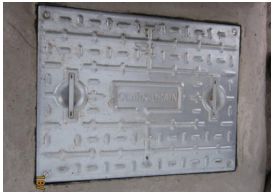Failure of a borehole supply serving rented property
This case study relates to a borehole supply serving an estate of 23 domestic dwellings, four of which are owner-occupied, but the majority (19) are rented. The volume of water used each day is estimated at 40m3 making this a large supply (Regulation 9). The borehole is deep and lined, and the head is above ground and protected by a pump house. Water is pumped to three reservoirs and then feeds, by gravity, to each property. Under the previous 1991 regulations the supply was tested by the local authority and, in 2008, following microbiological failures (including E.coli), the local authority concluded that the borehole was poorly constructed allowing ingress of contaminants from an adjacent cracked concrete track frequently used by cattle. The installation of chlorination equipment was recommended and, after obtaining technical advice from the Inspectorate, the owner was advised to locate this before the reservoirs to enable sufficient contact time between the chlorine and the water for adequate disinfection. Subsequent planned samples proved satisfactory, therefore no other advice about managing the supply was provided to the owner.
In September 2010, following the introduction of the new regulations, the local authority carried out a risk assessment which identified uncontrolled hazards in relation to both the source and the distribution network. Evidence of deficiencies included
- lack of vermin protection on the reservoir out flows, as evidenced by frogs inside the reservoir, and no record to show the reservoirs had ever been cleaned out.
- lack of sound management; this was verified when, in response to E.coli in a sample the owner reported the chlorinator had been turned off for a period of four days because of brown sediment in the dosing system.
The local authority advised the owner to restart the chlorinator, however, due to the owner’s lack of knowledge about chlorine supply and demand this resulted first in overdosing of chlorine (2.5mg/l) identified by user taste complaints and then in underdosing (0.2mg/l). Taken together, all this information led the local authority to conclude that the supply posed a potential danger to human health and a Regulation 18 Notice was served on the owner. The improvements required were as follows:
- repair of the borehole head works to prevent ingress;
- vermin proofing reservoir outflow and pump house;
- providing a lockable reservoir cover;
- emptying and cleaning the reservoirs;
- establishing written management procedures for the disinfection system, including recommended trigger and action levels;
- checking and cleaning of storage tanks at the tenanted properties.
There was no appeal by the owners in relation to this Notice.
This case study illustrates how the new powers to issue Notices can be used straightforwardly to encourage the owners to take appropriate health-based action in relation to maintenance and management of a private supply. It also demonstrates how satisfactory test results can lead to a false sense of security when the owner does not fully understand either the hazards or how these need to be controlled.
Unprotected borehole headworks before improvement.

Headworks after improvement with protective cover.

Reservoir hatch before improvement.

Reservoir hatch after improvement with additional fixed cover.

